At a headline level, results have fallen this year
A*-A results were down from 22.3 per cent of all results last year, to 21.7 per cent of all results this year.
On the headline A*-C measure, results were down from 70.8 per cent to 69.5 per cent. (Figures given here and in the rest of this post are UK-wide, unless otherwise stated, and for 16-year-olds only. If you want to know our reasons for focusing on 16-year-olds, skip ahead to this part of the post.)
 At the A*-C level, this has been driven in part by a fall in the English pass rate. Results in maths went up at both the A*-A and the A*-C level.
At the A*-C level, this has been driven in part by a fall in the English pass rate. Results in maths went up at both the A*-A and the A*-C level.
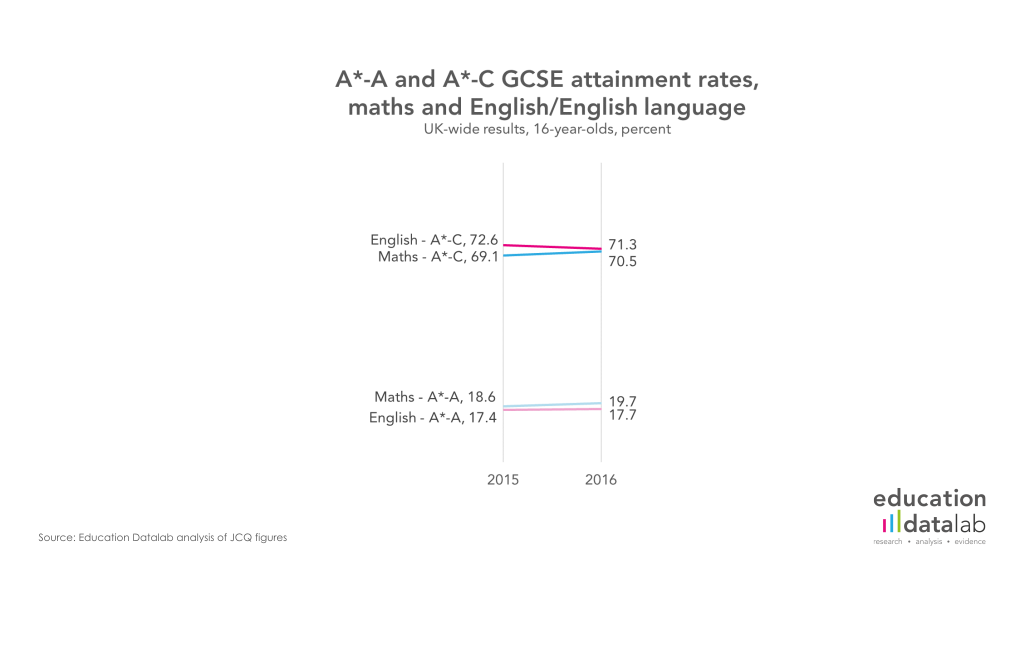
The impact of IGCSEs can’t be ignored on
Despite this being the last year in which English and maths IGCSEs will count in league tables, schools have continued to switch to these qualifications.
English GCSE entries by 16-year-olds decreased by 7.5 percent, from 414,000 to 383,000, for example, when the age 16 population only decreased by 3.1 percent – presumably IGCSEs picked up a lot of the slack.
At their briefing this morning, the Joint Council for Qualifications suggested that it might have been students close to the C/D borderline in particular who moved from doing GCSE to IGCSE.
Ofqual have combined English/English language GCSE and IGCSE results and found that the 16-year-old A*-A pass rate is effectively unchanged from last year
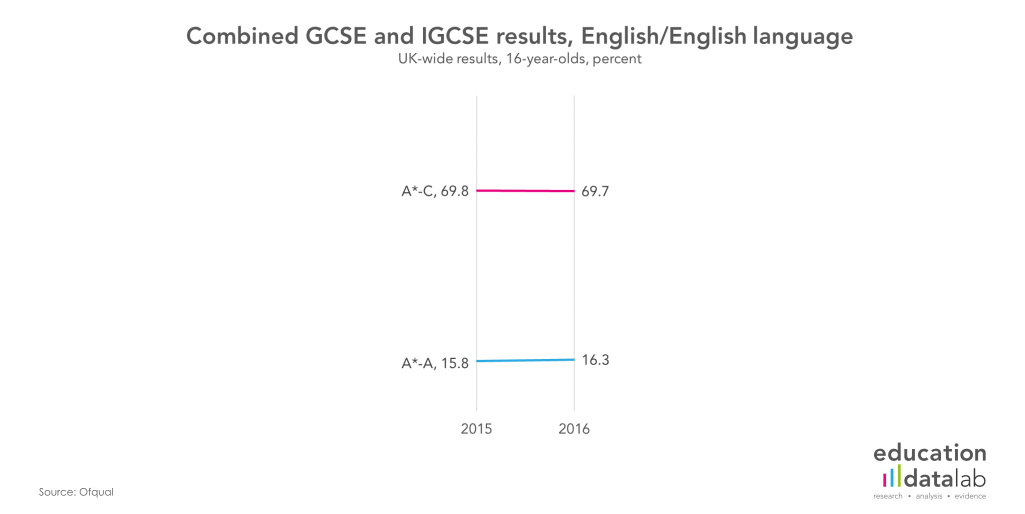
The gender gap widened slightly this year
At the headline A*-C level, girls’ results declined 1.2 percentage points – from 75.2 per cent to 74.1 per cent – while boys’ results declined by 1.5 percentage points (from 66.2 per cent to 64.7 per cent)

There was a big increase again in the number of post-16 entries in English and maths
Children who achieve a D in English or maths GCSE and carry on in full-time education are now required to retake these subjects.
As a result, there’s been an enormous increase in the number of post-16 entries – for English these were up 31.9 per cent, to 128,201, and for maths 32.6 per cent, to 173,628.
As we explore more in this post, post-16 pass rates in these subjects are much lower than the corresponding rates for Year 11 pupils.
This explains to some extent, then, why the all-ages pass rates in English and maths that are being reported elsewhere are down so much – overall, the UK-wide, all-ages English A*-C pass rate was down from 65.4 per cent to 60.2 per cent, and the corresponding maths results were down from 63.3 per cent to 61.0 per cent.
(This, as we mention above, is the reason why we’ve focused on Year 11 entries only in our coverage.)
Meanwhile the number of children in Year 10 or below who are taking GCSEs in these subjects has dropped to fairly tiny numbers, now that only pupils’ first entries count in school league tables (previously if they resat exams their best entry in any particular subject would be counted).
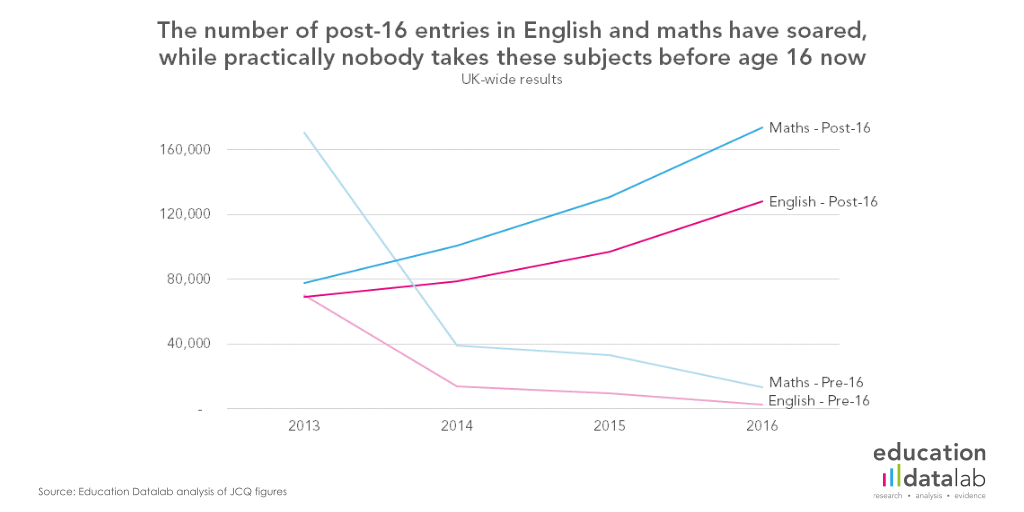


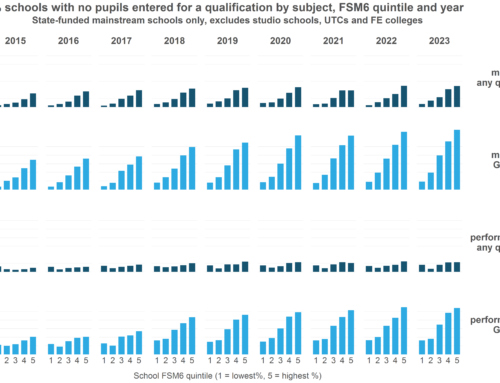
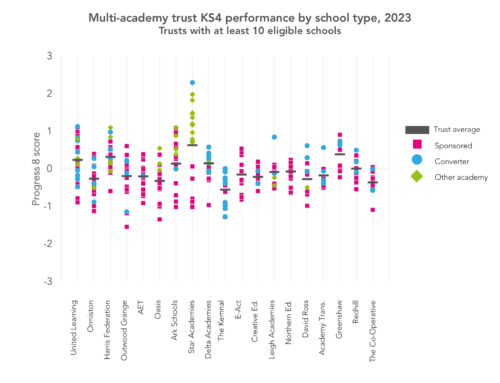
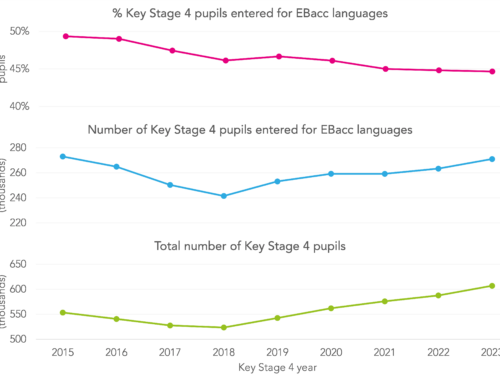
It’s really interesting that the government has released the figures for *all* pupils including those taking re-sits, bringing the headline figures way down … is the plan there that schools and LAs get cocky and complacent because they are above average, and then in a couple of months when RAISEonline comes out, they get walloped by the much higher “age 16 only” figures when it’s too late to put in for re-marks?
Hi Stephen. It was JCQ- effectively a consortium of exam boards- who put out the data yesterday for all pupils and 16 year olds (as they always do). In truth little is made of it after results day though schools might find the 16 year old figures helpful when looking at performance in each of their departments.